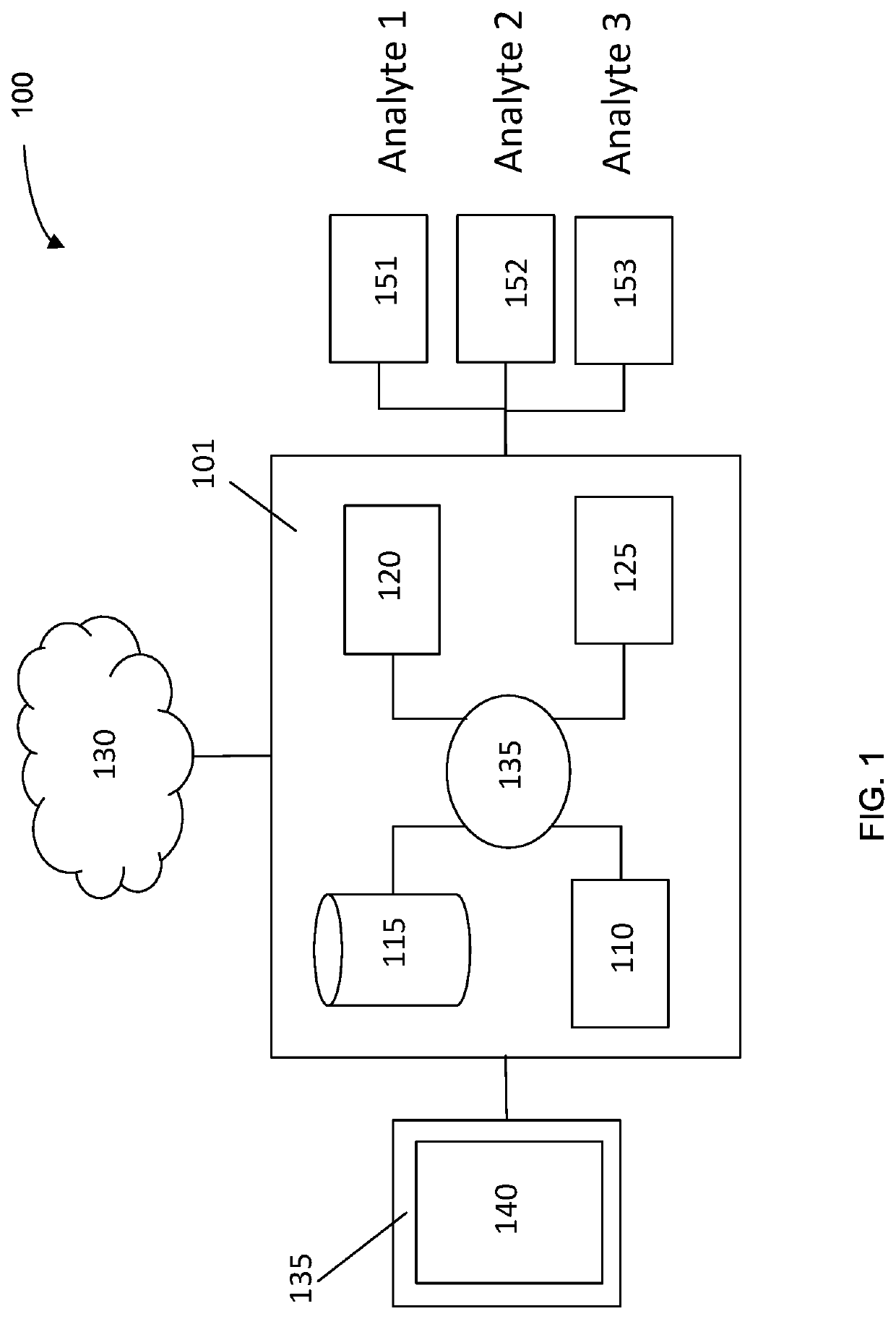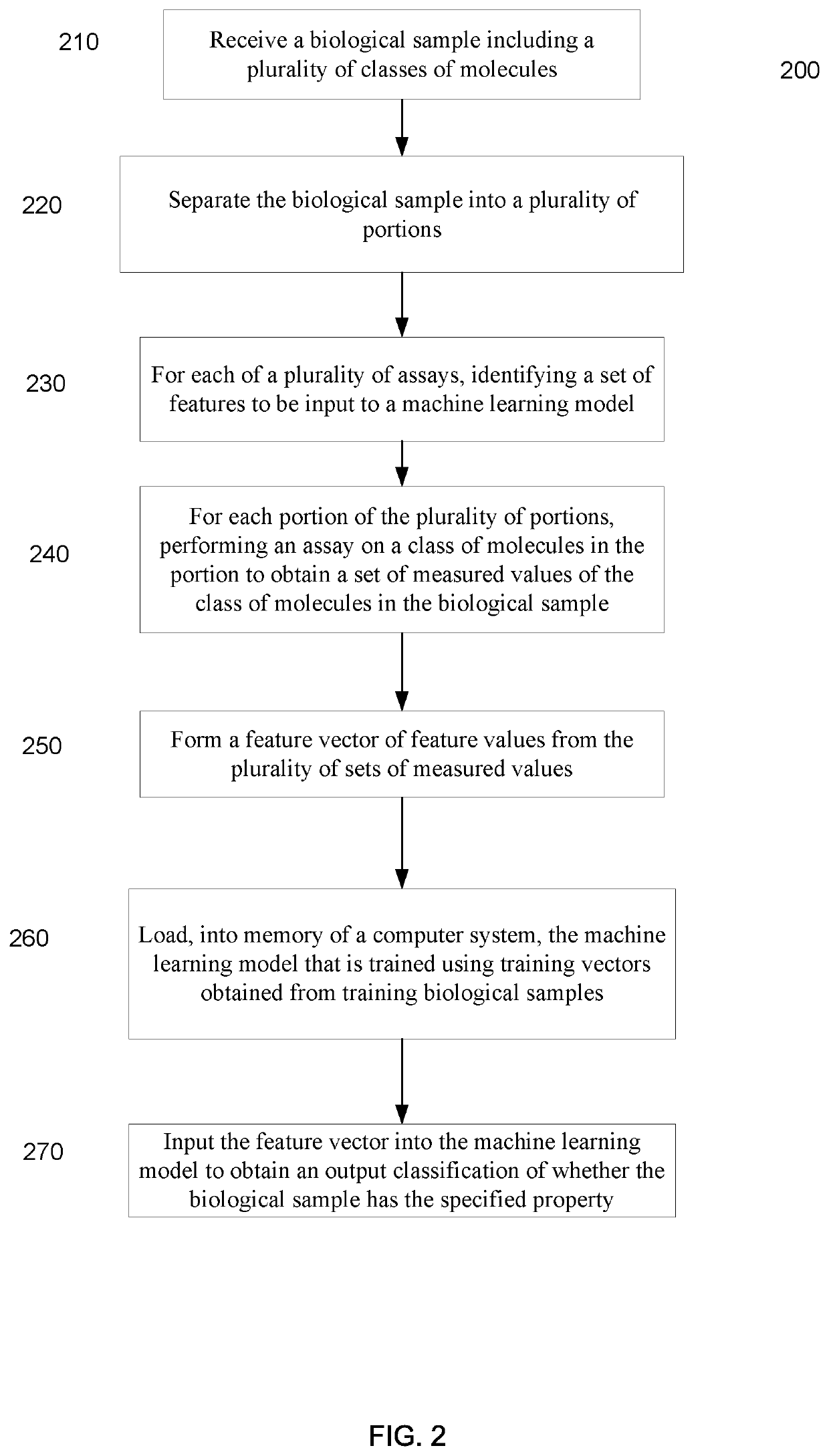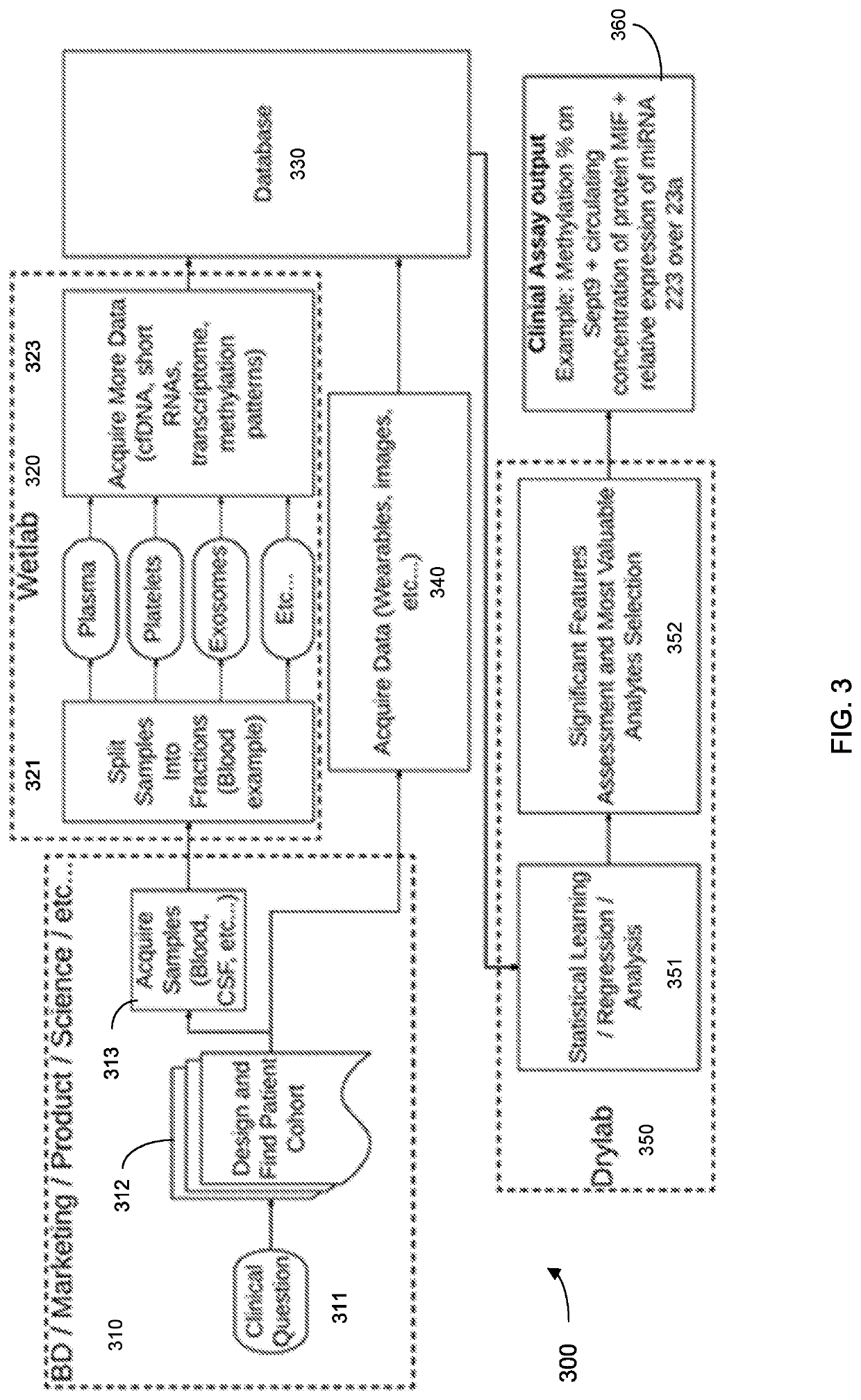Machine learning implementation for multi-analyte assay development and testing
a multi-analyte assay and machine learning technology, applied in the field of machine learning implementation of multi-analyte assay development and testing, can solve the problems of low participation, complex cancer screening, and limited current tests
- Summary
- Abstract
- Description
- Claims
- Application Information
AI Technical Summary
Benefits of technology
Problems solved by technology
Method used
Image
Examples
example 3
C. Example 3
Identification of Hi-C-Like Structure Using Covariance of Sequence Depth in Two Different Genomic Regions from cfDNA Across Multiple Samples
[0519]This example describes a method of Identification of Hi-C-like structure at two different genomic regions from cfDNA in single sample to identify cell-type-of-origin as a feature for multianalyte-model generation.
[0520]The genome sequence of multiple cfDNA samples was segmented into non-overlapping bins of varying length (for example, 10-kb, 50-kb, and 1-Mb non-overlapping bins). The number of high-quality mapped fragments within each bin was then quantitated. The high-quality mapped fragments met a quality threshold. Pearson / Kendall / Spearman correlation was then used to calculate the correlation between pairs from the bins within the same chromosome or between different chromosomes. The structure score calculated from the nuance structure of the correlation matrix was used to generate a heatmap as shown in FIG. 13. A similar h...
example 4
D. Example 4
Detection of Colorectal Cancer, Breast Cancer, Pancreatic Cancer, or Liver Cancer
[0554]This example describes using perform predictive analytics using artificial intelligence based approaches to analyze acquired cfDNA data from a subject (to generate an output of diagnosis of the subject having a cancer (e.g., colorectal cancer, breast cancer or liver cancer or pancreatic cancer).
[0555]Retrospective human plasma samples were acquired from 937 patients diagnosed with colorectal cancer (CRC), 116 patients diagnosed with breast cancer, 26 patients diagnosed with liver cancer, and 76 patients diagnosed with pancreatic cancer. In addition, a set of 605 control samples were acquired from patients without a current cancer diagnosis (but potentially with other comorbidities or undiagnosed cancer), of which 127 had confirmed negative colonoscopies. In total, samples were collected from 11 institutions and commercial biobanks from Southern and Northern Europe and the United States...
example 5
E. Example 5
A Gene Expression Prediction Model that Uses cfDNA Fragment Coverage and Length to Predict Which Genes are Highly or Lowly Expressed in cfDNA-Producing Cells
[0599]This example describes methods for generating predictions of the expression or chromatin state of a gene, for example, by analyzing cfDNA. profiles using one or more convolutional neural networks (CNNs). Such methods are useful in a multi-analyte platform for classification of individuals with and without colorectal cancer (CRC). The expression of a gene can be controlled by access of the cell's machinery to the transcription start site (TSS). Access to the TSS can be determined the state of the chromatin on which the TSS is located. Chromatin state can be controlled through chromatin remodeling, which can condense (close) or loosen (open) TSSs. A closed TSS results in decreased gene expression while an open TSS results in increased gene expression. Identifying changes in the chromatin state of genes can serve ...
PUM
 Login to View More
Login to View More Abstract
Description
Claims
Application Information
 Login to View More
Login to View More - R&D
- Intellectual Property
- Life Sciences
- Materials
- Tech Scout
- Unparalleled Data Quality
- Higher Quality Content
- 60% Fewer Hallucinations
Browse by: Latest US Patents, China's latest patents, Technical Efficacy Thesaurus, Application Domain, Technology Topic, Popular Technical Reports.
© 2025 PatSnap. All rights reserved.Legal|Privacy policy|Modern Slavery Act Transparency Statement|Sitemap|About US| Contact US: help@patsnap.com



